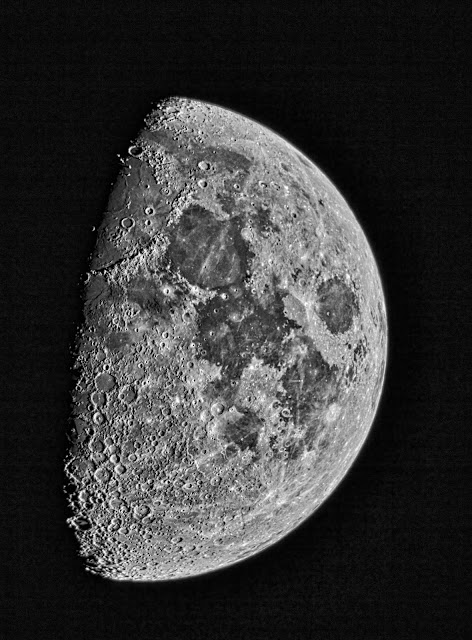M 32 with lots of Chromatic Aberration
(that's the excessive blue/purple stars)
There are basically two kinds of refractor telescopes: achromatic and apochromatic.
Achromatic refractor telescopes are far cheaper than apochromatic ones due to their design and the kind of glass used in the main lens (objective). The apochromatic will render faithful colors and no excessive blue/purple glows around stars... but at what a price!
Unless the achromatic telescope (the cheaper design) has a long focal length (f/10+) the result will be that the various colors of light from a pinpoint source (a star) will focus at different distances from the lens as you can see in this illustration.
In this case, you can see in the illustration below that the blue wavelength of light focuses closer than the green or read. The result is called chromatic aberration, where an excessive amount of blue/purple light around, for my purposes, an otherwise "white" star.
Here is the same photo cropped to the upper left hand quarter at 100%:
The color blueish/purple around the bright stars is not only quite objectionable they are false colors as well.
So, how can one get rid of it?
There is a program called "darktable" could help a lot! And it is FREE !
(Yes, they titled it with a lower case "d" !)
First of all, astrophotographers know that you must take the images in the RAW mode, not jpg.
"darktable" can access the RAW image and allow you to make fine adjustments to the image.
"Defringing" is one of the keys here.
It is not easy to find with this program but it is under the "Correction" group (right hand side of the program).
Zoom in on an offending star and then select the "defringe".
Next select the operation mode "static threshold (fast)"
Then move the "edge detection radius" all the way to the right.
Next move the "threshold" slider all the way to the right.
Here's the comparison of before and after (100% mag of that upper left hand corner):
Before... ...after
Much better!
Now save the RAW modified image by the keyboard shortcut "control + e".
You will find the adjusted image in a folder called "darktable_exported" with a TIFF file.
About Aprochromatic Design: The Star of Refractor Telescopes
The apochromatic design and lens is designed to bring all the colors to the same point on a digital camera sensor, hence chromatic aberration is history... but at what price? An aprchromat designed refractor can be 3x to 10x greater in cost for the same focal length.


























